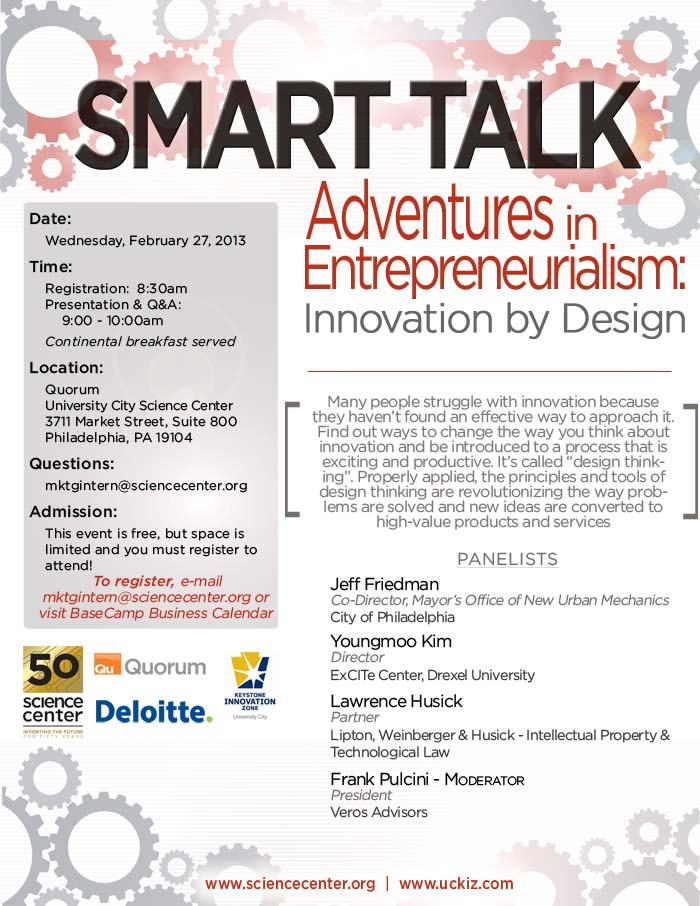Blog Posts
Stay up to date with our latest news and ideas.
Designing the Future Video Highlights
innovation design thinking designing the future
Posted 17 Jan 2014 by Matthew Fieger.Three Warning Signs of Unnovation
innovation unnovation
Posted 28 May 2013 by Tom Downing.Unnovation is a new word for an old practice. To be unnovative is not simply to fail to innovate. Rather, it is to pretend to innovate while — consciously or unconsciously — rejecting the underlying principles of innovation. It is to give lip service instead of taking action. Unnovation is faux innovation. The term may be new, but any who have felt the stifling hand of unnovation on their lives and dreams are all too familiar with the concept. Here are three warning signs:
1) The culture of the organization makes its people afraid to fail.
It is likely that every individual reading these words has participated in a future-oriented “brainstorming” situation at one time or another and heard these words: “Remember, is no such thing as a stupid idea; we want to hear from everyone.” Those who have not had such an experience can feel free to skip to the next point.
Still reading? Then you know the tentative, uneasy pause that always follows these words. People blink and look at each other. After a few blank minutes, someone comes to the moderator’s rescue with a tentatively phrased idea that is so general and vanilla-flavored that it carries no risk of rejection. “We should look for ways to add value.” “We should do things that will make us unique.” And so forth. At length, the discussion gets rolling, and — after everyone has had some contribution—the group will look back at the list it has developed with satisfaction. There may even be a good idea or two in the list.
Is this a facetious look at the “blue sky” process? Perhaps; but consider for a moment why the moderator has to tell people there are no stupid concepts, and that everyone should speak up. Maybe these are empty words, spoken ritualistically, but their very existence points to the fact that in at least some organizations, most members have the default perception that: The organization thinks my ideas are stupid and the organization doesn’t want to hear from me.
If this perception is so daunting that it must be ritually suspended just to let people talk about ideas, think of the affect it has on people’s willingness to contemplate doing anything new. “Fail early and often” advises innovation guru David Kelley, but if doing so means swimming against organizational culture, who wants to take the risk?
2) The organization’s insight-seeking consists of asking its current clients/customers, “What else do you want?”
If disruptive innovation is the goal, there are several things wrong with this approach. In the first place, we humans have a poor ability to know what might please us, and an even poorer ability to communicate to describe such ideas in the abstract. If asked a question of this type, people typically hypothesize by tweaking: what they want turns out to be a faster/bigger/smaller/safer/cheaper version of whatever they already have, perhaps in a different color.
People are so consistent in this type of response that, taken together, the resulting data seem fraught with import: if 38 percent of our customers want a bigger widget and 34 percent want a smaller one, it may seem that we’ve got the size wrong. But it may just be that our respondents are: Happy with what they have, relieved to have been able to come up with a helpful suggestion in response to our question, prepared to defend that suggestion by overstating its importance to them (66 percent would be at least “somewhat likely” to purchase!), and unlikely to replace what they have for some time to come.
The second big problem with this approach is, of course, that these are already our clients. Disruptive innovations, as Clayton Christensen so effectively showed in The Innovator’s Dilemma, are solutions that will likely be less desirable — at least at present — to our current customers. To disrupt, we must venture among those whose needs we are not yet meeting. And when we do, we will need to earn our insights; the process is never as simple as asking people what they want and carefully recording the answers.
3) The company touts its own uniqueness yet benchmarks itself against a competitive set.
“We want to be unique,” says the unnovator, “Just like our competitors!” We may chuckle at the oxymoron, but mixed messages such as this one are all too commonplace. Some organizations are almost strident in their internal calls for members to “think outside the box” while simultaneously looking to industrywide “gold standards” and “best practices” to establish rules governing even minor details of those members’ efforts. Consider the cynicism and lack of engagement this fosters — as well as a dearth of innovative thinking.
This is not to say that there is no place for standards. Roger Martin, in The Design of Business, posits a “knowledge funnel,” into which we feed mysteries (at the wide end) that we refine into heuristics, and finally develop into algorithms (at the skinny end) for producing successful products and services. The wide end of the funnel calls for thinking outside the box while the skinny end requires staying well within the box. This makes sense — different approaches for different challenges. But the unnovative organization either recognizes no such distinction, or fails to make it clear to the people involved. Members of a group, who are being challenged to think outside the box, while complying with rules that keep them inside the box, are in a special sort of hell, and they know it.
UCSC Smart Talk Video Highlights
innovation design thinking UCSC
Posted 17 Jan 2013 by Matthew Fieger.UCSC Smart Talk Video Highlights
innovation design thinking UCSC
Posted 17 Jan 2013 by Matthew Fieger.


Twitter | Youtube | Linked In